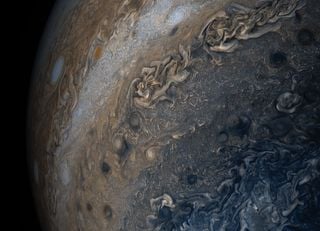Alien weather: Astronomers map exoplanet to find dramatic weather and a climate never seen before
This might sound like science fiction, but it is in fact science research. A planet beyond our Solar System appears to have an intricate and dramatic weather system, a new 3D map reveals.

Astronomers have mapped the 3D structure of an exoplanet beyond the Solar System for the first time. What they found surprised them after utilising telescopes from the European Southern Observatory’s Very Large Telescope (ESO’s VLT).
On the exoplanet, it appeared that powerful winds carried elements like iron and titanium. This led to the creation of intricate weather patterns all across the atmosphere of that planet.
“This planet’s atmosphere behaves in ways that challenge our understanding of how weather works — not just on Earth, but on all planets. It feels like something out of science fiction,” said Julia Victoria Seidel who is a researcher at the European Southern Observatory (ESO) in Chile.
About the planet
The planet is known as WASP-121b, or Tylos, and is around 900 light-years away. Located in the constellation Puppis, it is like an extra-hot Jupiter, being a gas giant circling a host star closely. There, a year lasts only around 30 Earth hours. One face of the planet is often scorching while the other is cooler.
After the team probed into the atmosphere there, they discovered distinctive winds in individual layers. This was presented in their map of the atmosphere’s structure in 3D. This is the first time astronomers have been able to study a planet’s atmosphere outside our Solar System in such detail and depth.
“What we found was surprising: a jet stream rotates material around the planet’s equator, while a separate flow at lower levels of the atmosphere moves gas from the hot side to the cooler side. This kind of climate has never been seen before on any planet,” said Seidel, another researcher at the Lagrange Laboratory in France.
The jet stream that was observed appeared to stretch across half of the planet, building speed, and strongly “churning” the atmosphere high in the sky into the hot face of the planet, making the conditions for some dramatic weather.
How the 3D map was achieved
The astronomers uncovered these observations using the ESPRESSO instrument on ESO’s VLT. It was used to merge the light of four large telescope units into a single signal. By being able to gather four times as much light as one telescope, more faint details could be observed. ESPRESSO could even detect the signatures of chemical elements, assessing different parts of the atmosphere.
“It’s truly mind-blowing that we’re able to study details like the chemical makeup and weather patterns of a planet at such a vast distance,” says Bibiana Prinoth, who is currently a PhD student at Lund University, Sweden, and ESO.
If scientists want to investigate the conditions of planets that might host life, with similar conditions and sizes to Earth, bigger, powerful telescopes will be required. This research is an example of how powerful telescopes can be key for revealing new details of "alien worlds" beyond our Solar System.
Source of the news
“Titanium chemistry of WASP-121 b with ESPRESSO in 4-UT mode”. Astronomy and astrophysics. DOI: 10.1051/0004-6361/202452405.








